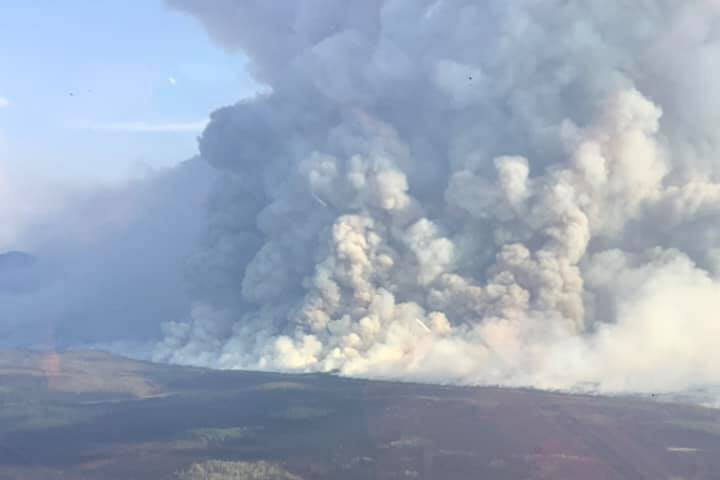The record-low snow conditions south of the Alaska Range have had big impacts across the state, especially around wildfire potential. In early March, the Iditarod had to move the race to the northern route, while the Alaska Division of Forestry & Fire Protection (DOF) declared an early wildland fire season in its Coastal Region, requiring burn permits starting March 17 instead of the usual April 1. This region includes Southeast, Southcentral, and Southwest Alaska (find map here).
Even before the DOF order took effect or Jessie Holmes’s dog team crossed the finish line in Nome, two fires had already spread in the snow-free grasses of the Kenai Peninsula and Mat-Su Valley, confirming the early fire danger in Alaska’s most populous areas. The risk of human-caused fires has become evident, with at least 17 requiring a response as of April 4. Most were the result of negligent burning, emphasizing the critical importance of ensuring that burn piles are monitored, keeping fire tools on hand, and never leaving a fire unattended.
While local, state, and federal fire managers prepare for an already active fire season, it is critical that Alaskans exercise caution with anything that could ignite a fire. We encourage homeowners to reduce wildfire hazards around your home by following Firewise principals.
Burning yard waste in a pile or barrel is a common spring chore for many homeowners, and in these extreme conditions, it is important to follow safe burning practices as outlined on the DOF Learn Before You Burn website https://dnr.alaska.gov/burn/ and on burn permits. Unsafe burning is a major contributor to wildfires, especially this time of year because dry, dead vegetation is exposed to the sun, creating a landscape primed for ignition that could quickly spread and endanger lives and property.
For an even safer option, consider disposing of yard waste at designated woody debris disposal sites operated by local municipalities, boroughs or state DOF offices. You can find a Web App showing the disposal sites in Alaska here.
As we head into spring, Alaskans should take extra precautions:
Be mindful when recreating on dry, exposed vegetation — one spark from an ATV, snowmachine, or chain saw can start a fire.
Follow all burn permit requirements and restrictions. Do not burn on a windy day. If conditions continue to deteriorate, burn suspensions or closures may be necessary to protect lives and property.
If you see smoke or fire, report it immediately by calling 911 or 1-800-237-3633. Early detection can mean the difference between a small fire and a large-scale emergency.
Stay informed through information from your local government fire departments, emergency services, and wildland fire agencies through social media and online sources such as the Alaska Wildland Fire Information (akfireinfo.com) or the Alaska Interagency Coordination Center website.
Years like this one, where the snow melts early, are more likely to result in above-average fire seasons, according to new research from the University of Alaska Fairbanks. While early snow-off does not guarantee a big season, Alaska’s spring snowmelt now occurs nearly two weeks earlier than it did in the 1990s, contributing to long-term wildfire trends. Both tundra and boreal forest regions are experiencing larger, more frequent fires, with statewide impacts.
The new Alaska’s Changing Wildfire Environment summarizes what is known about how wildland fire in Alaska is changing https://www.frames.gov/afsc/ACWE. The report was compiled by the UAF Alaska Fire Science Consortium with contributions from the Alaska wildfire management community.
By staying informed and taking precautions now, Alaskans can help reduce the risk of dangerous wildfires. Just as mushers adapt to unpredictable trail conditions, we must also adjust to Alaska’s changing fire landscape. The same lack of snow that forced the Iditarod north is fueling early fire activity in the south. While the Iditarod’s route may shift year to year, our responsibility to prevent wildfires remains constant.
Kyle Cowan is Borough of Land Management Alaska Fire Service manager. Tyler Anderson is assistant fire director of operations for U.S. Forest Service Region 10. Norm McDonald is deputy director of Fire Protection Alaska Division of Forestry & Fire Protection.

